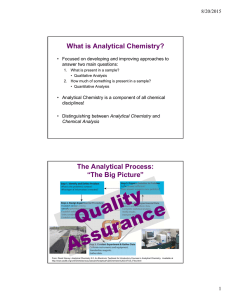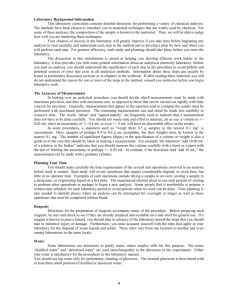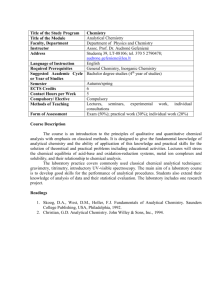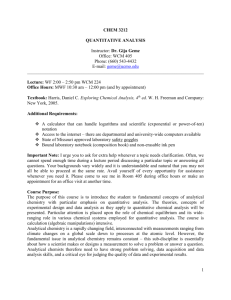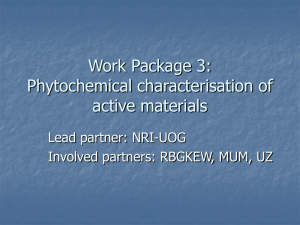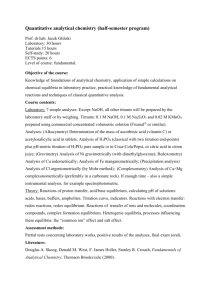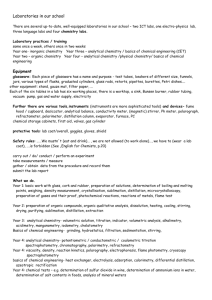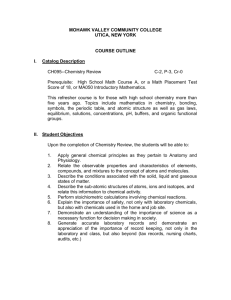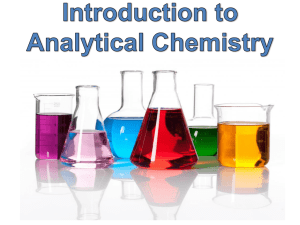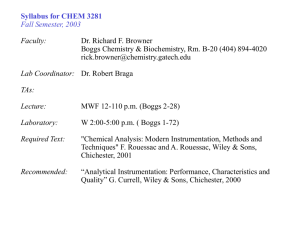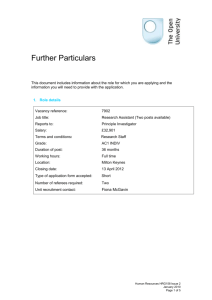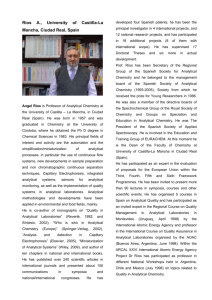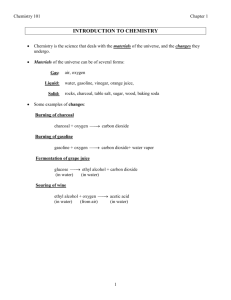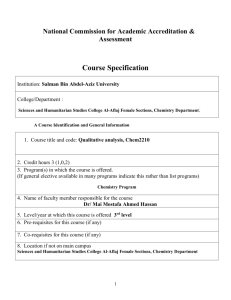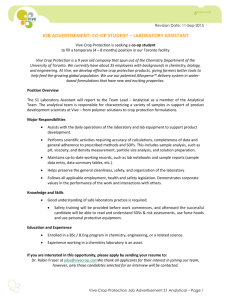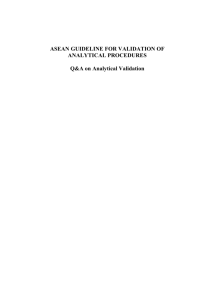Learning Outcomes for CHEM247
advertisement
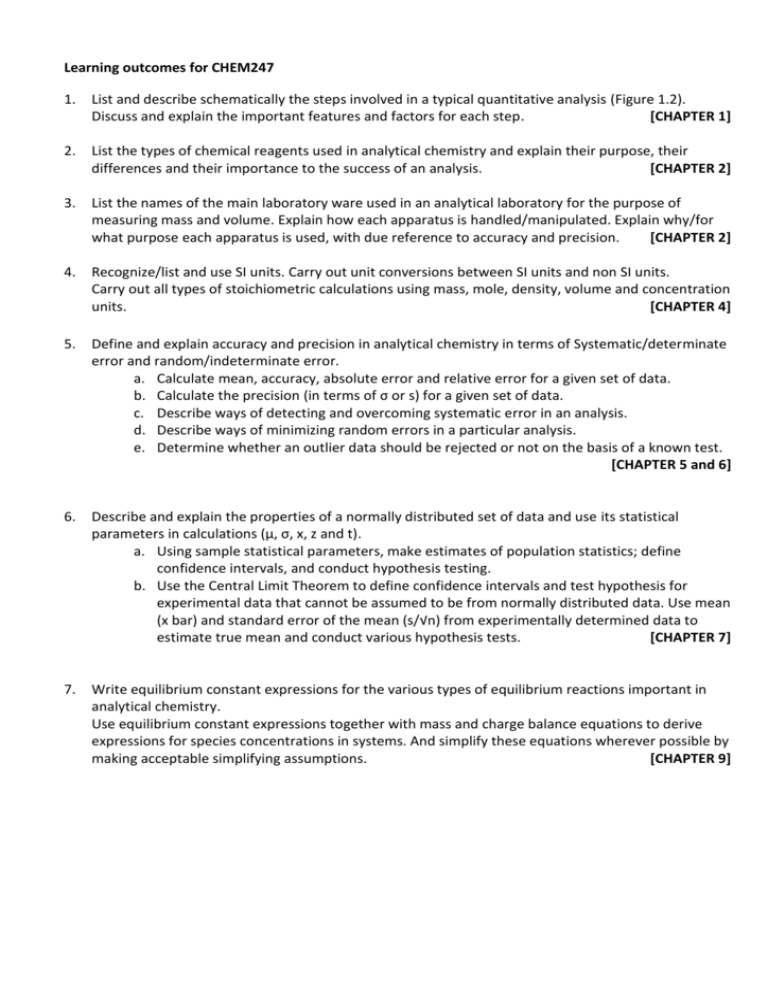
Learning outcomes for CHEM247 1. List and describe schematically the steps involved in a typical quantitative analysis (Figure 1.2). Discuss and explain the important features and factors for each step. [CHAPTER 1] 2. List the types of chemical reagents used in analytical chemistry and explain their purpose, their differences and their importance to the success of an analysis. [CHAPTER 2] 3. List the names of the main laboratory ware used in an analytical laboratory for the purpose of measuring mass and volume. Explain how each apparatus is handled/manipulated. Explain why/for what purpose each apparatus is used, with due reference to accuracy and precision. [CHAPTER 2] 4. Recognize/list and use SI units. Carry out unit conversions between SI units and non SI units. Carry out all types of stoichiometric calculations using mass, mole, density, volume and concentration units. [CHAPTER 4] 5. Define and explain accuracy and precision in analytical chemistry in terms of Systematic/determinate error and random/indeterminate error. a. Calculate mean, accuracy, absolute error and relative error for a given set of data. b. Calculate the precision (in terms of σ or s) for a given set of data. c. Describe ways of detecting and overcoming systematic error in an analysis. d. Describe ways of minimizing random errors in a particular analysis. e. Determine whether an outlier data should be rejected or not on the basis of a known test. [CHAPTER 5 and 6] 6. Describe and explain the properties of a normally distributed set of data and use its statistical parameters in calculations (μ, σ, x, z and t). a. Using sample statistical parameters, make estimates of population statistics; define confidence intervals, and conduct hypothesis testing. b. Use the Central Limit Theorem to define confidence intervals and test hypothesis for experimental data that cannot be assumed to be from normally distributed data. Use mean (x bar) and standard error of the mean (s/√n) from experimentally determined data to estimate true mean and conduct various hypothesis tests. [CHAPTER 7] 7. Write equilibrium constant expressions for the various types of equilibrium reactions important in analytical chemistry. Use equilibrium constant expressions together with mass and charge balance equations to derive expressions for species concentrations in systems. And simplify these equations wherever possible by making acceptable simplifying assumptions. [CHAPTER 9]


